
.jpg)
How to Select the Right Antenna
There is an overall antenna selection guide for the ultimate wireless design, as each choice of antenna type comes with its pros and cons.
Antenna Selection is Crucial
Finding a proper antenna plays a key role in wireless design. The performance of a wireless system relies heavily on selecting the right antenna, which makes it one of the most challenging tasks during the initial project stage. This guide introduces several common types of antennas in terms of their unique features, specifications, advantages, and disadvantages to help you make informed decisions.
What are the common types of antennas?
The following list of 6 major kinds of antennas is intended to offer valuable guidance when selecting the antenna you need, although there is a wide range of antennas available on the market.
SMD Antennas
Surface-mount technology emerged in the 1960s and became widely used in the 1980s. Today, SMDs have grown into being an unstoppable solution for the next generation, thanks to their outstanding capability for highly scalable production of breakthrough technologies.
Features:
Surface-mount technology largely replaces the construction method of through-hole technology of fitting components and increases manufacturing automation.
Benefits:
- Lightweight and compact
- Reducing costs
- Improving space utilization and quality by eliminating the need for holes in the board and allowing both sides of the board to be used more fully.
- Accelerate product time to market
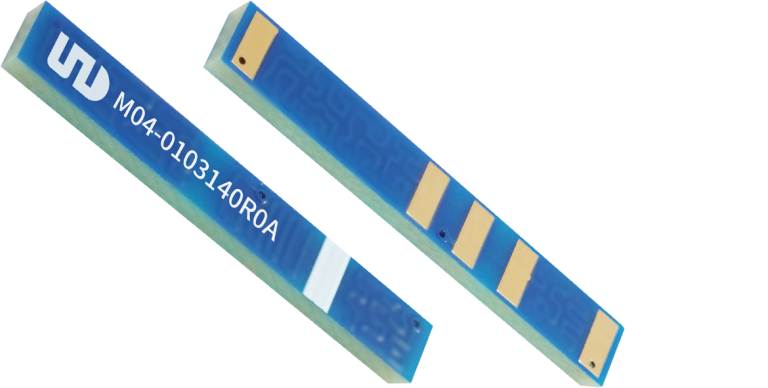
Stamped Metal Antennas
Stamped metal antennas have gained popularity due to their design and mounting edges. Comprising simple metallic struts, these antennas eliminate the need for carrier material, as they can be directly mounted onto PCBs or housing walls using cables or soldering. Engineered for both onboard and surface-mount applications, stamped metal antennas significantly boost wireless performance in consumer electronics, IoT devices, and automotive systems.
Benefits:
- Stamped metal antennas are engineered to overcome the challenges posed by metal enclosures, delivering reliable signal transmission and reception even in challenging environments.
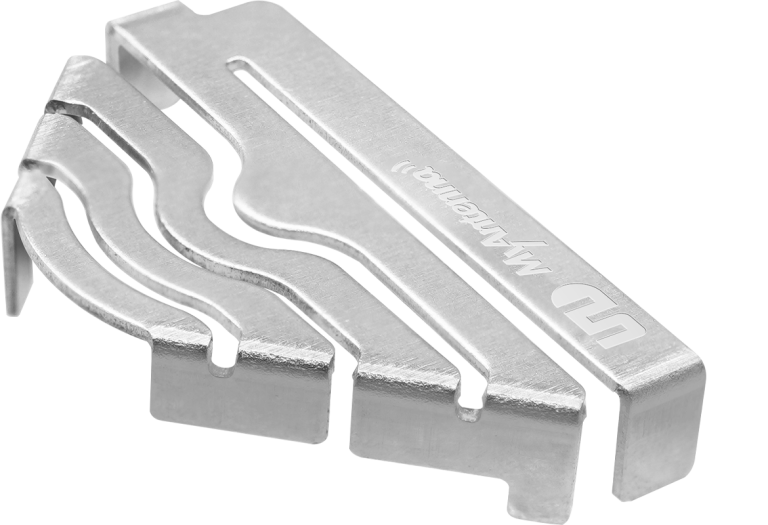
Flexible Printed Circuit (FPC) Antennas
FPC (Flexible Printed Circuit) antennas are an ideal solution for compact circuit boards where space is extremely limited due to their small form factor design and ease of integration. Made from polymer film and conductive materials, these antennas can be precisely stuck along the device contour, offering unparalleled integration flexibility unmatched by other antenna solutions.
Benefits:
- Compact
- Space saving
- Flexibility to fit a variety of designs.
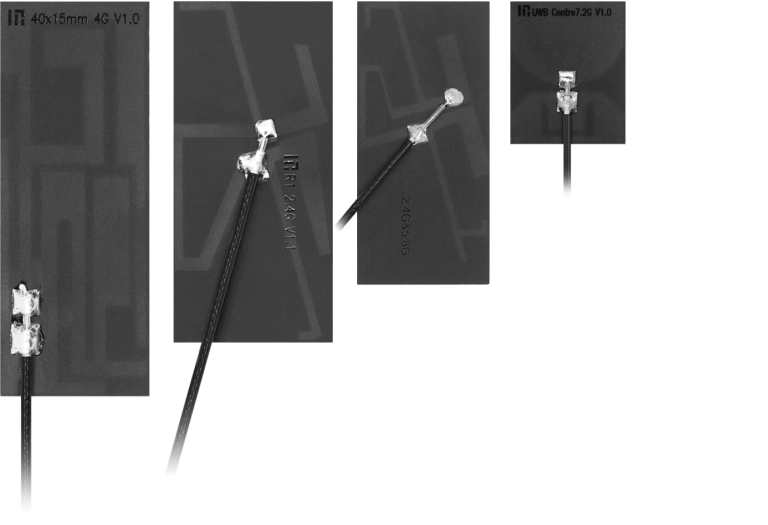
Embedded Ceramic Patch Antennas
Ceramic patch antennas are common solutions customized for GNSS\GPS applications. They are made of finely tuned ceramic substrates and generally require a larger ground plane when mounted to ensure optimal performance. It is important that when selecting an antenna, rather than picking the antenna with the highest performance parameters based on the datasheet, it’s more important to find one that fits your design needs and minimizes integration challenges.
Benefits:
- Miniaturized
- Low profile
- Reliable performance
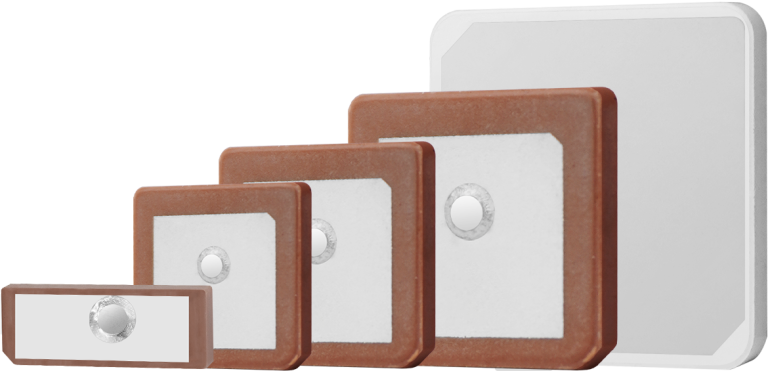
Terminal Antennas
Similar to mobile phone antennas, “terminal” refers to a category of devices and antennas used for these devices are known as terminal antennas. The earliest terminal antennas (sometimes known as external antennas) were widespread during the 1980s and ’90s. Early wireless technologies used them exclusively, and they still have advantages over alternative antenna types today if used properly.
Benefits:
- Superior Performance: Offers higher efficiency.
- Noise Immunity: Provides resistance to product-generated noise.
- Durability: Features a rugged, vandal-resistant housing.
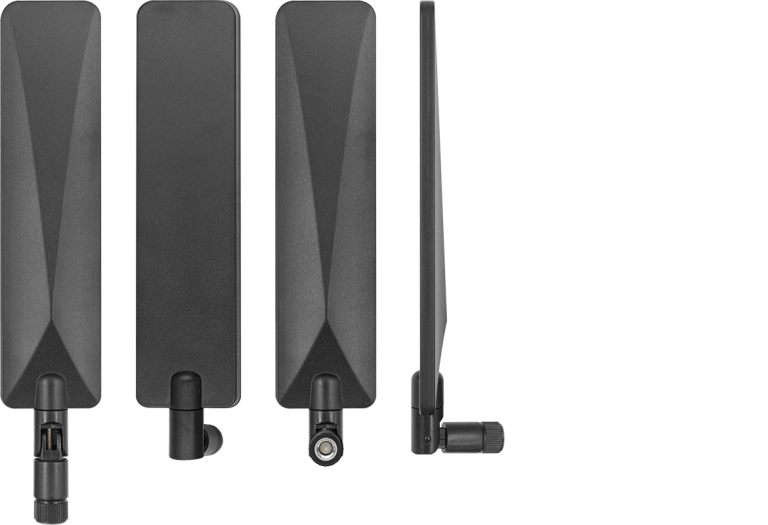
Wireless Modules
Powerful wireless modules perfectly target a wide variety of IoT applications, ranging from low-power sensor networks to the most demanding tasks. they become one of the top solutions for wireless connectivity due to simplified RF architecture and PCB space saving.
Benefits
- High Consistency and Reliability
- Easy to Integrate
- Off-the-Shell, Application-Ready
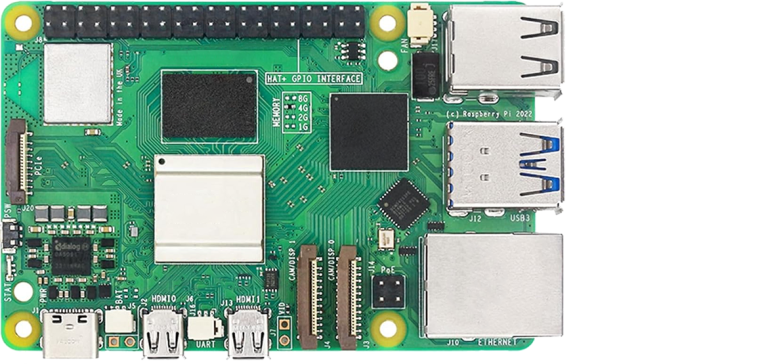
Comprehensive Guide to Pick An Antenna
Your choice of antenna hinges on your specific application. Assess your needs to select the appropriate communication protocol, frequency range, gain, efficiency, and other performance metrics. For instance, if your focus is on vehicle positioning, GPS antennas must be your prior choice.
The type of antenna required depends on your application. Whether you're considering a terminal antenna, an SMD antenna, a helical antenna, or another variant, each type offers distinct advantages under different conditions.
Evaluate the mounting options for your device—adhesive, screw-through-hole, or magnetic. Additionally, determine if the antenna will be located on the outside of the device or embedded inside, as this will influence your choice of antenna type - external or internal.
For antennas mounted on a PCB board, precise placement is critical. For example, some SMD antennas perform best along the long-side edge of the PCB, while others are more effective in corners. Consult with the Aboosty team for tailored recommendations.
Beyond the antenna and PCB dimensions, ensure you account for the clearance area to guarantee a proper fit. In addition, some antennas require a consideration of ground plane dependency, as they may need a specific ground plane or an increased ground plane for optimal performance.
Consider the necessary accessories for your antenna, such as cables and connectors. Check the supplier's packing list to see if these items are included and whether customization is available. Many OEM/ODM manufacturers offer custom RF assemblies and specialized tools for easier installation, such as SMA connector installation tools. Feel free to contact our sales team for more details.
Antenna Design Process Videos
Tool.ABOOSTY
ABOOSTY has developed a free antenna selection and placement tool for global designers and engineers working with wireless technology.

Lifetime Technical Support
Don’t worry about after-sales issues, just provide your proven order information and we’ll take care of the rest.
We offer lifelong technical support and warmly welcome engineers and antenna enthusiasts to engage in open discussions with us.
Together, let’s create more legendary designs and build a lasting legacy in antenna innovation.
